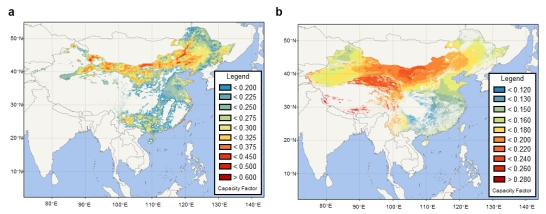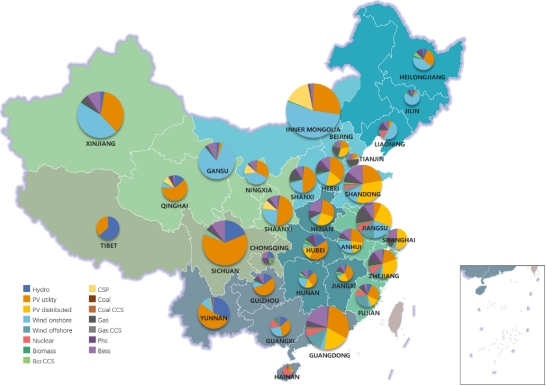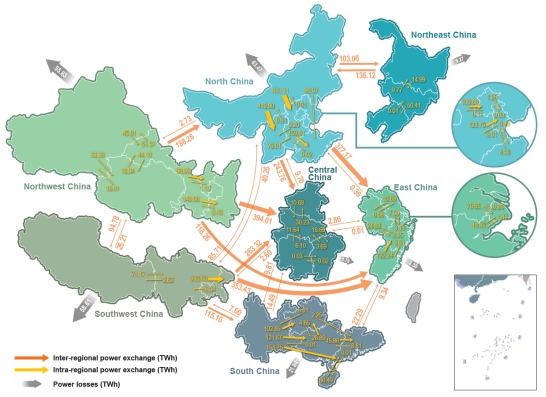Recently, Associate Professor Zhang Ning and Professor Kang Chongqing from the Department of Electrical Engineering and Applied Electronics (EEA) of Tsinghua University have made important progress in the field of carbon neutral transformation of China’s power system. The EEA team, together with Harvard University, the Institute of Climate Change and Sustainable Development of Tsinghua University, the School of Environment of Tsinghua University, and the Global Energy Internet Development Cooperation Organization, carried out research on the planning optimization and operation simulation of the carbon neutral transformation of China’s power system. By combining the energy resource endowment with the actual data of the power system, they analyzed the key impact of the dual-carbon goal on the structure and transition cost of China’s power system, and deduce the evolution path of the power system to achieve the dual-carbon goal. The research result was published in the international academic journal Nature Communications under the title “Cost Increase in the Electricity Supply to Achieve Carbon Neutrality in China”.

Geographical distribution of energy endowment of wind and photovoltaic renewable energy in China
At present, the annual carbon emission of China’s power system accounts for more than 40% of the total carbon emission of the whole society. The realization of carbon neutrality in the power system is an important part of China’s realization of the “3060” dual carbon goal of the whole society. Thermal power accounts for 67% of China’s power system, and renewable energy accounts for about 27%. The existing structural form of the power system cannot keep pace with the development of the dual-carbon goal. Since China’s primary energy resource endowment is quite different from that of other countries, there is no mature development experience for power system transformation to learn from. The power system’s consumption of high proportion of renewable energy is facing unprecedented challenges such as ensuring load supply and maintaining system security and stability. The technical path, potential benefits, transition costs and final structure of China’s power system to achieve carbon neutrality in the future are still unclear.
The transformation of the power system to carbon neutrality is a complex and systematic project of resource-technology-economic coupling. Based on the transformation challenges of China’s power system and the endowment of renewable energy resources, the team has comprehensively constructed a database of all factors required for the medium and long-term development planning of China’s power system, made a medium and long-term transformation plan for the power system in consideration of the resource endowment of renewable energy resources, and established models for critical factors of onshore and offshore wind power, centralized and distributed photovoltaic power, solar thermal energy, thermal power, hydropower, nuclear power, biomass energy, carbon capture power plants, pumped hydro, electrochemical energy storage, UHV AC and DC power grids, etc in consideration of the security challenges that a carbon-neutral power system will face, such as low system inertia and scarcity of flexible resources.

Simulation result of power supply development planning in each province of China under the carbon neutrality goal
The research shows that under the carbon neutrality goal, there will be tremendous change in the structure of China’s power system. “The proportion of renewable energy such as wind and photovoltaic power is increasing rapidly, and a variety of other low-carbon power generation and energy storage technologies will develop together”, and this will be an significant feature of China’s power system development under the dual-carbon goal. When the power system reaches a carbon neutral stage, the power load will be mainly supported by more than 5.8 billion kilowatts of wind power and photovoltaic units, and its electricity penetration rate will exceed 70%. The power grid is gradually transformed from a simple power transmission channel to a platform that supports two-way mutual power assisting and sharing between different regions. In addition, the carbon neutrality target will increase end-use electricity costs by 19.9%. The study points out that on the road to carbon neutral transformation of the power system, macro policies need to focus on the high-quality development of renewable energy, the construction of power markets, and support for emerging power technologies such as energy storage.

Simulation result of electricity transmission between provinces in China under the carbon neutrality goal
This research is based on the power system planning and decision-making software GOPT, which was independently developed by the team led by Associate Professor Zhang Ning of the Department of Electrical Engineering and Applied Electronics. The software has been used by the State Grid, China Southern Power Grid, and the State Nuclear Power Planning and Design Institute for a long time in their daily power planning work, supporting the power planning of more than ten provinces in China, and supporting the Institute of Climate Change and Sustainable Development of Tsinghua University to carry out research on carbon neutralization of carbon peaks in the power system. Moreover, the database, modeling method, quantitative attribution evaluation method and empirical conclusion constructed in this research work can provide basic data, research tools and conclusion reference for the transformation and sustainable development of China’s power system.
The first author of the paper is Zhuo Zhenyu, a doctoral student admitted in the Department of Electrical Engineering and Applied Electronics, Tsinghua University in 2017, and the corresponding authors are Associate Professor Zhang Ning and Professor Kang Chongqing from the Department of Electrical Engineering and Applied Electronics. Other authors include Du Ershun, an assistant researcher at the Institute of Climate Change and Sustainable Development, Tsinghua University, Lu Xi, a tenured associate professor at the School of the Environment, and researcher Chris P. Nielsen at the John A. Paulson School of Engineering and Applied Science at Harvard University, and Dr. Xiao Jinyu and Dr. Wu Jiawei from the Global Energy Internet Development Cooperation Organization. This project was funded by the National Natural Science Foundation of China Key Project, General Project and Youth Science Foundation Project.
Article link:
https://www.nature.com/articles/s41467-022-30747-0
Citations:
Zhuo, Z., Du, E., Zhang, N. et al. Cost increase in the electricity supply to achieve carbon neutrality in China. Nat Commun 13, 3172 (2022).

















 News & Events
News & Events